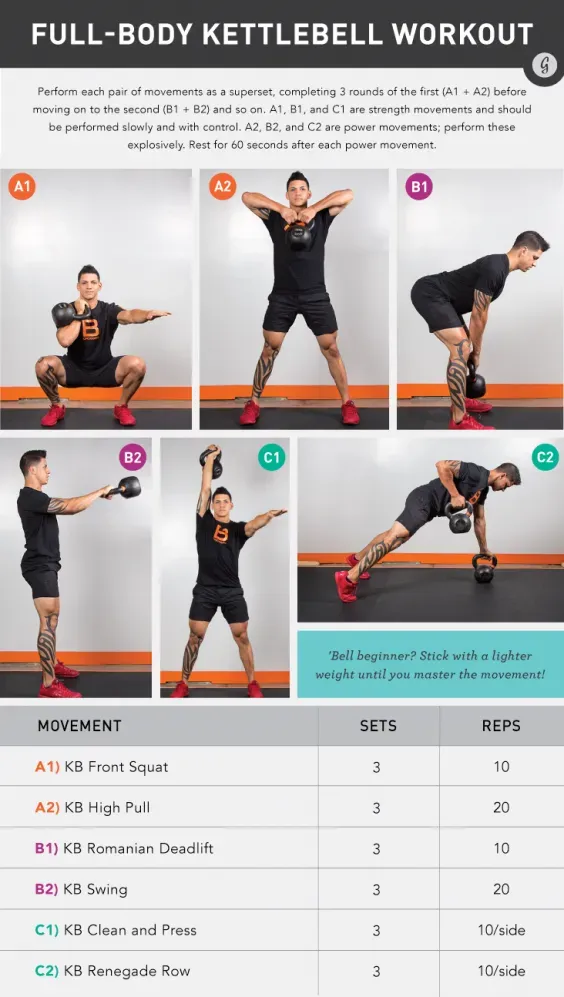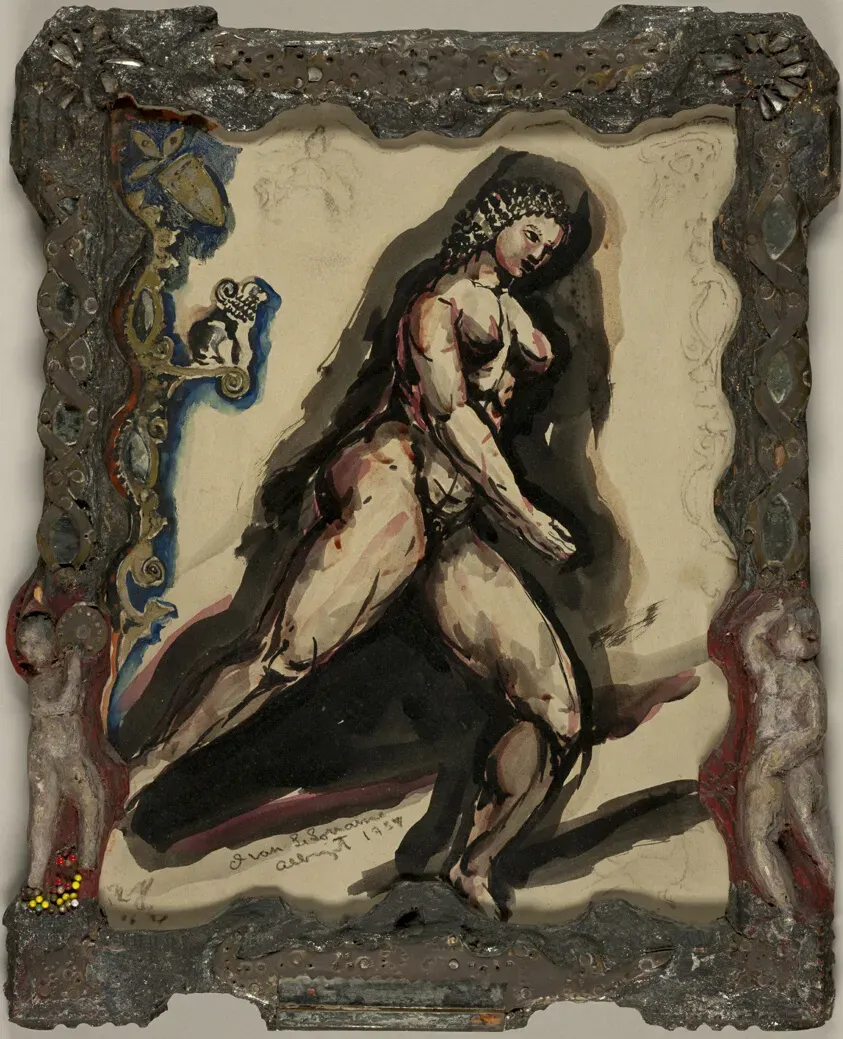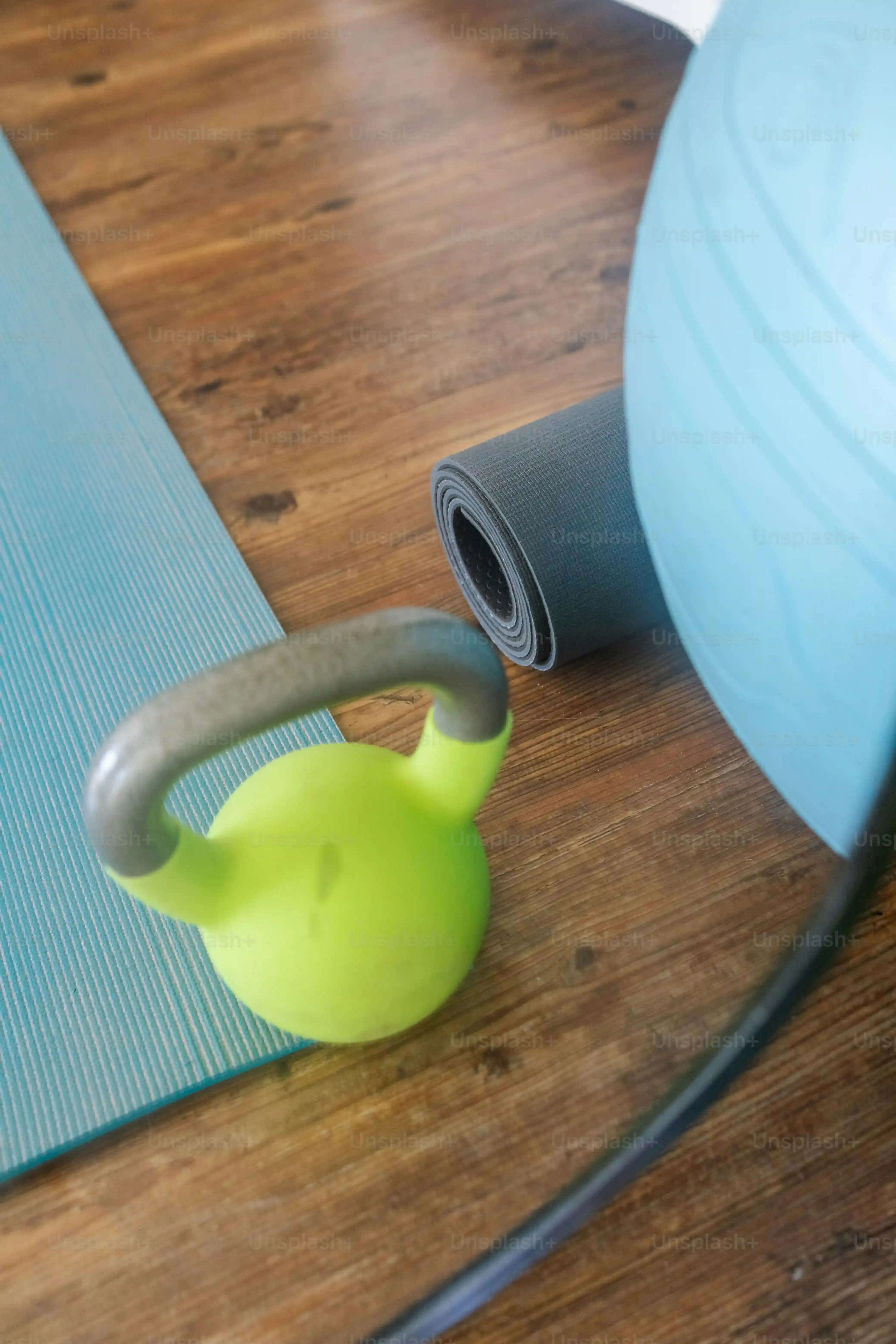Table of Contents
Walk into almost any gym, scroll through fitness feeds online, or chat with a training buddy, and you'll likely hear about the magic of the kettlebell swing. It's often touted as the ultimate exercise, a one-stop shop for strength, conditioning, and fat loss. And a common claim? That kettlebell swings are a full body workout.
Are Kettlebell Swings Really a Full Body Workout?

Are Kettlebell Swings Really a Full Body Workout?
The Common Claim vs. Reality
Let's address the elephant in the room right away: the idea that are kettlebell swings a full body workout. You hear it everywhere. It's the go-to phrase.
Swing a kettlebell, and suddenly your biceps are bulging, your abs are chiseled, and your calves are like steel cables.
If only it were that simple.
While the kettlebell swing is an incredibly effective and complex movement, calling it a *true* full body workout in the same vein as, say, a burpee or a clean and jerk requires a bit more scrutiny.
It definitely hits a lot of major muscle groups, no argument there.
But does it engage *every* muscle group significantly? Probably not in the way most people imagine when they hear "full body."
Breaking Down the Primary Movers
So, if it's not hitting *everything*, what exactly *is* the kettlebell swing doing?
At its core, the swing is a ballistic hip hinge.
The power comes from your posterior chain.
Think glutes, hamstrings, and lower back.
These are the prime movers, the engines driving the bell forward.
Your core works hard too, stabilizing your spine and transferring force.
Your shoulders and upper back help guide the bell, preventing it from flying off into orbit, but they aren't generating the power.
They're more like the steering wheel and suspension than the engine block.
Understanding which muscles are doing the heavy lifting is key to figuring out just how "full body" this exercise is.
Which muscles are primarily engaged?
- Glutes (the big drivers)
- Hamstrings (assisting the glutes)
- Lower Back (stabilization and extension)
- Core (abs, obliques, spinal erectors - for stability)
- Upper Back/Shoulders (stabilization and deceleration)
Defining "Full Body" in This Context
we know the swing hammers the posterior chain and core.
That's a solid chunk of musculature.
But what about the chest?
The biceps?
The quadriceps?
While they might get some minor activation or isometric hold, they aren't primary movers in the way they would be in a push-up, curl, or squat.
Calling something "full body" usually implies significant work across all major muscle groups – pushing, pulling, squatting, hinging, carrying.
The swing nails the hinge and core stability beautifully.
It offers some isometric work for the upper body.
But it doesn't replace direct work for chest pressing, pulling movements, or deep knee flexion.
So, are kettlebell swings a full body workout in the sense of hitting *every* muscle group equally or even significantly? No, probably not.
Are they a fantastic exercise that works a *large portion* of the body and offers significant systemic benefits? Absolutely.
It's a matter of precision in language.
Swing Mechanics: Which Muscles Get the Most Work?

Swing Mechanics: Which Muscles Get the Most Work?
The Engine Room: Hips Don't Lie
Alright, let's get under the hood of the kettlebell swing. When you're hiking that cannonball back and exploding it forward, the real horsepower comes from one place: your hips. This isn't some arm exercise, no matter how much some folks try to make it one.
The glutes are the absolute kings here. They extend your hips powerfully, driving the bell up. Think of them like the V8 engine of the swing. Right alongside them are your hamstrings, which help extend the hip and also control the backswing.
If you're doing it right, you should feel this primarily in your backside and the back of your thighs. If your lower back is screaming or your arms are burning from lifting, you're doing it wrong. You're probably muscling the weight instead of hinging.
The Crucial Connection: Core and Spine
While the hips generate the force, your core is the critical link that transfers that power. Your abs, obliques, and the muscles along your spine work overtime to keep your torso stable.
Without a rigid core, that force dissipates. It's like trying to push a car with a rope made of spaghetti. A strong, braced core ensures the energy from your hips travels efficiently up through your body and into the bell.
Your lower back muscles (spinal erectors) are also heavily involved, not just for stability but also for extending the spine at the top of the swing, though the primary extension should come from the hips.
- Primary Power Generators: Glutes, Hamstrings
- Essential Stabilizers: Core (Abs, Obliques, Transverse Abdominis), Spinal Erectors
- Supporting Players: Upper Back, Shoulders, Forearms (Grip)
The Supporting Cast: Upper Body's Role
Now, what about the upper body? Your shoulders and upper back (lats, rhomboids) definitely play a role, but it's largely supportive and reactive.
They help guide the kettlebell, prevent it from yanking you forward on the downswing, and decelerate it at the top. Your grip muscles in your forearms and hands are also working hard just to hold onto the darn thing.
But don't confuse this stabilizing and guiding role with primary work. You aren't pressing the bell up with your shoulders or curling it with your biceps. It's more like they are the puppet strings, and your hips are the puppeteer pulling the show off.
"The kettlebell swing is a vertical jump pattern expressed horizontally." That's a common way to describe it, emphasizing the lower body's explosive role.
Beyond Muscle Groups: The Full Body Effort of the Kettlebell Swing

Beyond Muscle Groups: The Full Body Effort of the Kettlebell Swing
More Than Just Muscle: The Systemic Impact
so we've established that kettlebell swings aren't hitting your pecs like a bench press or building biceps like a curl. Fair enough. But saying they aren't a *full body effort* misses a huge piece of the puzzle. Think about what's actually happening: you're generating explosive power from your hips, coordinating multiple muscle groups to transfer that force, and then having to control and decelerate a moving object. This isn't just a localized muscle exercise; it's a dynamic, ballistic movement that taxes your cardiovascular system, improves coordination, and builds explosive power. It's a massive metabolic demand, requiring energy from your entire system to keep that bell moving safely and efficiently. It's the coordination, the timing, the sheer *effort* of linking your lower body drive to your upper body control that makes it feel like more than just a few muscles working in isolation.
Getting the Most Out of Your Kettlebell Swings for Full Body Impact

Getting the Most Out of Your Kettlebell Swings for Full Body Impact
Master the Hinge First
so we've established that kettlebell swings aren't going to give you a bench press workout for your chest, but they absolutely deliver a massive bang for your buck, particularly for that powerful posterior chain and core. To truly maximize the "full body *effort*" part of the swing, the absolute non-negotiable starting point is nailing your form. This isn't just about avoiding injury; it's about making sure the right muscles are doing the work. If you're muscling the bell up with your arms or bending over at the waist like you're picking up groceries, you're missing the point entirely and robbing your hips and core of the stimulus they need. Find a good coach, watch reputable tutorials, and practice the hip hinge pattern without a weight first. Your power output, and therefore the systemic impact, hinges on this foundational movement.
Varying Your Swing Style
Once you own the basic two-hand swing, you can tweak it slightly to potentially shift some emphasis or add a bit more challenge elsewhere. Single-arm swings, for instance, introduce a significant anti-rotation challenge to your core – your abs and obliques have to work harder to keep your torso stable as the weight tries to twist you. Hiking the bell a bit higher in a "sport style" swing demands more control and slightly different timing, though the power still comes from the hips. But let's be clear: none of these variations suddenly turn the swing into a bicep builder or a quad crusher. They just add layers to the existing movement pattern.
Consider these variations once your basic form is solid:
- Single-Arm Swing: Increases core anti-rotation demand.
- Hand-to-Hand Swing: Adds coordination and grip challenge.
- Double Kettlebell Swing: Increases load on the posterior chain and core.
- American Swing (Overhead): Demands more shoulder mobility and control, but can be riskier for the shoulders if not performed correctly. Stick to eye-level swings initially.
Integrating Swings for Comprehensive Fitness
Thinking about are kettlebell swings a full body workout in isolation is less useful than considering how they fit into a broader fitness plan. They are a phenomenal tool for developing explosive power, building a resilient posterior chain, strengthening the core, and getting a serious metabolic workout. But for genuine, balanced full-body development, you need to pair them with other movements. Combine swings with pushing exercises (like push-ups or presses), pulling exercises (like rows or pull-ups), and different lower body patterns (like squats or lunges). That's where you get the complete picture. Use the swing for what it's best at – driving power from the hips and building core strength – and complement it with other exercises to hit the muscle groups the swing doesn't prioritize. That’s the smart way to train.
The Verdict: Kettlebell Swings and the "Full Body" Claim
So, after breaking down the mechanics and muscle engagement, are kettlebell swings a full body workout? The short answer is: they hit a *lot* of your body, hard. The hips, glutes, hamstrings, core, and back get significant work, and even your shoulders and grip join the party. But let's be realistic – they aren't magically training your chest, quads, or biceps in the same way a bench press, squat, or curl would. Think of the swing as a powerhouse engine for your posterior chain and core, a crucial piece of the puzzle for overall strength and conditioning. Relying solely on swings for a truly comprehensive full body training plan is like expecting a hammer to build an entire house; it's essential, but you'll need other tools in the box to finish the job right.